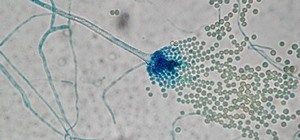The rate of preterm birth has been increasing in the United States for unknown reasons, causing increased health risks for infants born too soon. But researchers may have found a signal that could help doctors plan ahead for, or even prevent, early birth with a simple swab of the vagina and cervix during pregnancy.
In 2015, 10% of infants were born premature, according to the Centers for Disease Control and Prevention, and the annual report card from the March of Dimes says that the US "has taken a step backward, as the nation's preterm birth rate worsened for the first time in eight years."
A normal pregnancy lasts between 38 and 42 weeks. An infant born prior to 37 weeks is considered premature and is at higher risk for health issues including developmental delay, vision, hearing, breathing, intestinal, and other difficulties.
Certain conditions in the mother can up the odds of preterm delivery including:
- Issues with pregnancy: A history of preterm delivery, multiple births, weakened cervix, high blood pressure, and early membrane rupture known as placenta previa, can result in premature birth.
- Concerns with mom: Problems with kidney or heart disease, diabetes, or poor prenatal care and nutrition can boost rates of preterm delivery. Moms over 35, or with a history of early labor or delivery difficulties, are more likely to deliver preterm as well.
For many otherwise healthy moms, the reason for premature birth is unknown. Given the long-term emotional, physical, and financial cost of premature infants, researchers are investigating what factors could contribute to preterm birth.

A paper presented recently at the annual meeting of the Society for Maternal-Fetal Medicine, and published by the American Journal of Obstetrics & Gynecology, suggests the type of bacteria in the birth canal during pregnancy could be associated with premature birth.
"For the first time in 8 years, the number of pre-term babies in the United States actually increased in 2016, and unfortunately, there are underlying causes that doctors still don't understand," study researcher Michal Elovitz, of the Perelman School of Medicine at the University of Pennsylvania, said in a press release.
Decoding the causes of prematurity has been a riddle that's stumped researchers and clinicians for years, but our new study is finally shedding some light on a path toward offering treatment to women we can identify as being at-risk.
What You Might Not Expect When You're Expecting
To investigate spontaneous preterm birth, scientists collected bacteria from the lining of the cervix and vagina from 2,000 pregnant women at three specific times during pregnancy. All were single-baby pregnancies. Swabs were taken between 16-20 weeks, between 20-24 weeks, and again at 24-28 weeks. Genetic analysis identified the bacteria present in each sample.
Research concerning preterm birth often focuses on the function, or dysfunction, of the uterus. By bringing microbiology into play, the findings of the multidisciplinary research team indicate there is a significant association between cervicovaginal microbiota and spontaneous preterm delivery.
While the research does not identify a causal link, and needs to be confirmed with additional studies, it appears that bacteria including Lactobacillus and Bifidobacterium species appear to be associated with lower risk of preterm birth. The presence of other species, like anaerobic bacteria, were clearly associated with increased risk of premature delivery in this study.
The exact mechanism of the association of cervicovaginal microbes with preterm birth is not yet known. Despite that, the findings were strong enough for researchers to write:
Targeting the bacteria that are associated with an increased risk of [spontaneous preterm birth] and/or enhancing the presence of protective bacteria may serve as new therapies to reduce the rate of [preterm birth]. With this new evidence, these types of studies should become a research priority.
At the very least, vaginal bacterial analysis and swabbing for cervicovaginal bacteria may become commonplace during pregnancy to test for risk of preterm birth. Future research may develop therapies to target the mechanism that links "good" or "bad" microbial communities with preterm birth—and in the process, give each baby its best chance at a healthy future.
Just updated your iPhone? You'll find new emoji, enhanced security, podcast transcripts, Apple Cash virtual numbers, and other useful features. There are even new additions hidden within Safari. Find out what's new and changed on your iPhone with the iOS 17.4 update.



























Be the First to Comment
Share Your Thoughts